So I have let's say pretty complex database which is using many to many database design with foreign keys and join tables and it's Room database. I want to create backup system for it because it's offline application I would need to export database and store it to google drive's app folder. I have read quite a lot about it in recent day's but still a bit confused I saw that there is ways to export database as CSV, JSON, excel files or just as .db file, but what are the best practices for doing so and how professionals dealing with it?
Asked
Active
Viewed 3,752 times
3
Phantômaxx
- 37,901
- 21
- 84
- 115
LeTadas
- 3,436
- 9
- 33
- 65
-
Your database is - in its essence - just a simple file. Using e.g. [WorkManager](https://developer.android.com/topic/libraries/architecture/workmanager) should make scheduled uploads a breeze. – Tadej Jun 18 '18 at 22:18
1 Answers
9
There is very little need to do anything complex, rather simply save the SQLiteDatabase file.
Basically close Room db then save the file.
e.g. the following is a very rudimentary example that saves to the downloads directory in a sub-directory called DBsaves :-
@Override
protected void onCreate(Bundle savedInstanceState) {
super.onCreate(savedInstanceState);
setContentView(R.layout.activity_main);
resetSequenceAction();
if(Build.VERSION.SDK_INT >= Build.VERSION_CODES.M) {
verifyStoragePermissions(this);
}
}
@Override
protected void onStart() {
super.onStart();
mTestDB = Room.databaseBuilder(this,TestDatabase.class,TestDatabase.DBNAME).build();
addSomeData();
addSomeData();
addSomeData();
addSomeData();
mTestDB.close();
File dbfile = this.getDatabasePath(TestDatabase.DBNAME);
File sdir = new File(Environment.getExternalStoragePublicDirectory(Environment.DIRECTORY_DOWNLOADS),"DBsaves");
String sfpath = sdir.getPath() + File.separator + "DBsave" + String.valueOf(System.currentTimeMillis());
if (!sdir.exists()) {
sdir.mkdirs();
}
File savefile = new File(sfpath);
try {
savefile.createNewFile();
int buffersize = 8 * 1024;
byte[] buffer = new byte[buffersize];
int bytes_read = buffersize;
OutputStream savedb = new FileOutputStream(sfpath);
InputStream indb = new FileInputStream(dbfile);
while ((bytes_read = indb.read(buffer,0,buffersize)) > 0) {
savedb.write(buffer,0,bytes_read);
}
savedb.flush();
indb.close();
savedb.close();
} catch (Exception e) {
e.printStackTrace();
}
}
public void verifyStoragePermissions(Activity activity) {
final int REQUEST_EXTERNAL_STORAGE = 1;
String[] PERMISSIONS_STORAGE = {
//Manifest.permission.READ_EXTERNAL_STORAGE,
Manifest.permission.WRITE_EXTERNAL_STORAGE
};
int permission = ActivityCompat.checkSelfPermission(
activity,
Manifest.permission.WRITE_EXTERNAL_STORAGE);
if(permission != PackageManager.PERMISSION_GRANTED) {
ActivityCompat.requestPermissions(
activity,
PERMISSIONS_STORAGE,
REQUEST_EXTERNAL_STORAGE
);
}
}
Note the the onCreate and verifyStoragePermissions methods only included to get the permission to write to external storage (note user permissions also set in manifest).
- The import thing is to do this outside of Room (likewise if you were to restore from a backup).
After running :-
And then copying the file to a PC and opening with SQLite Manager :-
This being entirely as expected and as shown highly portable i.e. you can drop it into any SQLite tool (SQLite version used by such a tool may be a restrictive factor)
MikeT
- 51,415
- 16
- 49
- 68
-
Thank you for your help, I followed your advice, but now facing problem with importing backup. How importing database should work? I would need to close database again then import backup and then open database? – LeTadas Jun 19 '18 at 09:56
-
3yep basically just reverse the process i.e. copy db to restore to dbfile, you may find it necessary to restart the app. I use `Intent i = getBaseContext().getPackageManager() .getLaunchIntentForPackage( getBaseContext().getPackageName() ); i.addFlags(Intent.FLAG_ACTIVITY_CLEAR_TOP); finish(); startActivity(i); System.exit(0);` – MikeT Jun 19 '18 at 10:07
-
-
1However, you may want to first take a copy of the database. What I do is copy the database, delete the original, then copy file to restore to database file. If all Ok delete the copy taken. If not ok then delete the database file and rename the copy that was taken (copy is made to same path as db). – MikeT Jun 19 '18 at 10:13
-
1The problem is that if the restore is anywhere other than the start then you need to basically refresh all the data for all the activities. So theoretically yes but it may be hard/complicated. – MikeT Jun 19 '18 at 10:16
-
1And one more thing, would it be same process with Write-Ahead Logging enabled? I mean with it another file is created .db-wal – LeTadas Jun 19 '18 at 10:20
-
1
-
1

